For us outdoor enthusiasts that love to go camping in the summer, cold weather can be a drag. But camping in the colder months can be just as much fun (I promise). It can be done in various scenic locations and can be part of your other favorite pastime, snowshoeing. Moreover, it can provide those beautiful untouched snow-covered landscapes that snowshoers salivate over while also giving you that cozy summertime feeling of roasting marshmallows by the fire.
It may seem like a daunting task if you’re new to winter camping, and with temperatures below freezing, you might worry about freezing yourself. But with the proper preparation, you can enjoy all the snowshoeing adventures that cold weather camping offers.
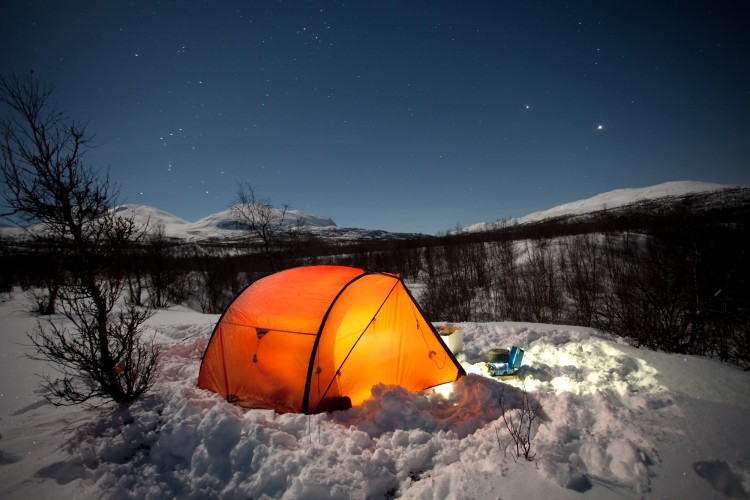
But with the proper preparation, you can enjoy all the snowshoeing adventures that cold weather camping offers, including a gorgeous night sky. Photo: Jens Ottoson via Shutterstock
Cold Weather Camping Tips
Before we dive into some of the best destinations for camping in the winter, here are a few essential tips to help get you started.
Layer it up
Wear several layers of clothing and stay dry. Wear a weather-proof outer layer that helps wick away moisture from snow and rain while protecting you from the wind. If you work up a sweat on your trip, peel the wet layer off and replace it with a dry one as soon as possible. And make sure you have some durable waterproof boots to protect your feet from the cold.
Read More: Snowshoeing Footwear: Tips for Choosing Your Boot
Invest in cold-weather sleeping gear
Invest in a quality cold weather sleeping bag and pad. You can also buy a liner for your current bag to improve the temperature rating. The pad is essential to keep you off the frozen ground. It can make a big difference in warmth and a successful outing. REI offers a helpful article for choosing the sleeping bag right for you.
Read More: Winter Camping Checklist: What To Bring on Your Trip
Choose your tent wisely
A 3-season tent may suffice depending on the location and time of year, but a 4-season tent is made with stronger poles and materials to withstand harsher weather. You’ll also want a tent big enough to store your gear away from the elements. Learn everything you’ve ever wanted to know about choosing the right tent for you in this REI article.
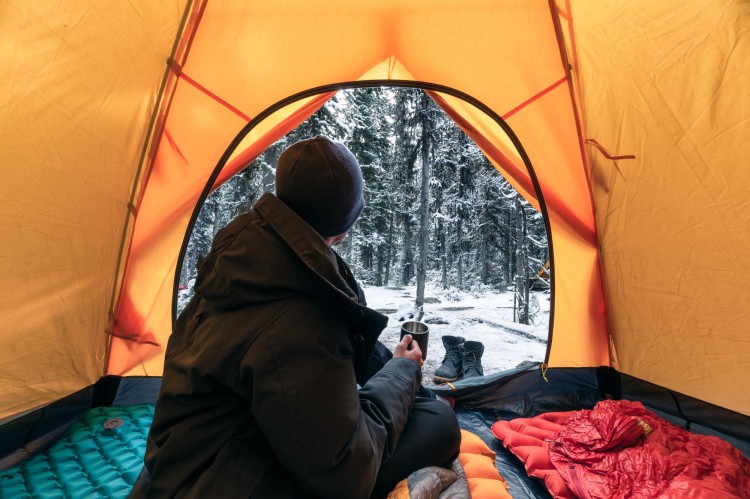
A 3-season tent may suffice depending on the location and time of year, but a 4-season tent is made with stronger poles and materials to withstand harsher weather. Photo: Mumemories via Shutterstock
Choose the right campsite
Choose a flat site close to water if possible and away from extreme peaks and valleys. Find a spot near a natural windbreak, such as the edge of a tree line, for added warmth.
Read More: The Winter Campfire: A Primer for Snowshoers and Campers
Store food properly
Store food securely in a weatherproof backpack or place your food in a stuff sack and hang it from a bear pole (if provided) or high tree branch using a rope. If available, use a metal food locker or canister to prevent wildlife from getting in. Never leave food or other scented products inside your tent.
Read More: Upgrade Your Winter Camp Kitchen With These 6 Great Items
Cold Weather Camping Destinations
Choosing the right gear is based on the destination and time of year you’ll be traveling. But, of course, picking the perfect destination is the best part. Isn’t it? So now that we have some of the basics down let’s go through some of the best winter camping adventures you can find.
Mt. Hood National Forest, Oregon
Located roughly 20 miles east of Portland, Oregon, this national forest encompasses over 1 billion acres of land. It’s a great place to visit during any season, especially in winter. It offers excellent snowshoeing opportunities, including near Mt Hood and several campgrounds and cabins to choose from for your stay.
Learn to ski at Timberline Lodge, home to the longest ski season in North America. Then, go cosmic tubing at Mt. Hood Skibowl, or take a guided snowshoe tour through the area to learn the geological and cultural history of Mt. Hood. It’s also home to over a dozen wineries and breweries, historical museums, cultural centers, and festivals year-round.
Read More: Let It Snow! 5 Places You Can Still Snowshoe in Oregon
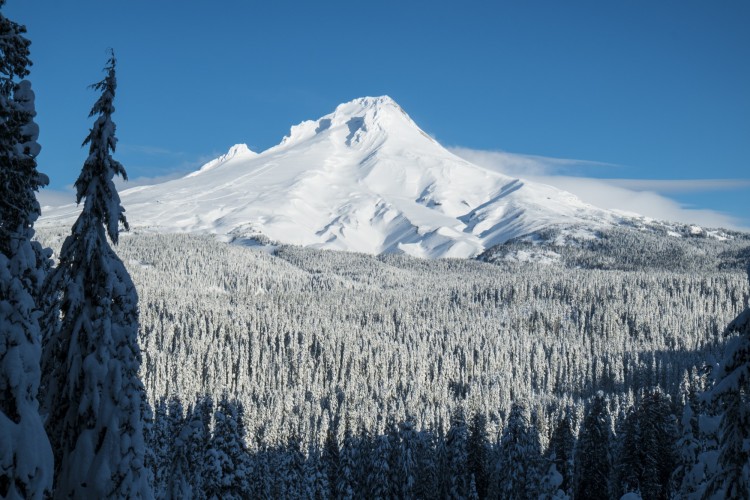
The number of campgrounds and snowshoeing opportunities make Mt Hood National Forest an excellent cold weather camping destination. Photo: Robert Crum via Shutterstock
Mount Rainer National Park, Washington
Established in 1899, this 236,000-acre park was designated a national historic landmark in 1997 and now contains 42 locations in the national register of historic places. Paradise is the primary use area in the winter and includes several snowshoeing, skiing, and sledding areas.
It’s also home to the historic Paradise Inn and Guide House. Camping is available just about anywhere in the park, and guided snowshoe walks at Paradise are available on the weekends in late December through March.
Read More: Luxurious Backcountry: Exploring Hut-To-Hut Trail System on Mount Rainier
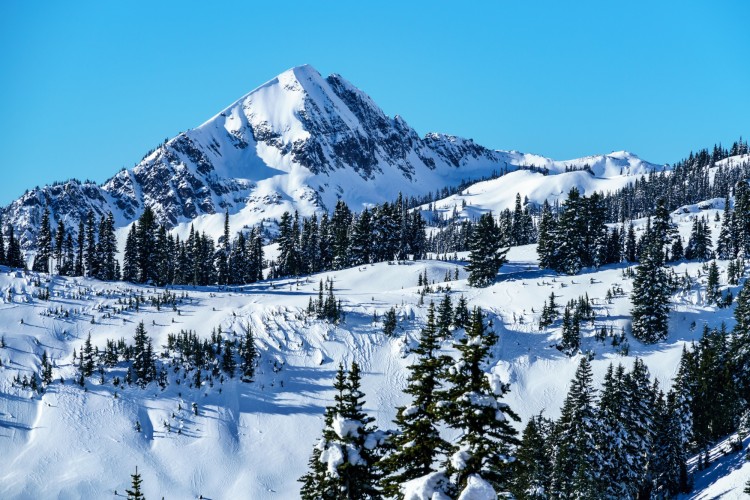
While camping, enjoy many winter activities, including guided snowshoe walks in the park. Photo: John T Callery via Shutterstock
Grand Teton National Park, Wyoming
Originally established in 1929, Grand Teton National Park is a popular destination for snowshoers, skiers, and even photographers interested in capturing the natural beauty of Teton Ridge and its surroundings in winter.
It’s famous for its breathtaking mountain views and abundance of wildlife. You can find elk, wolves, mule deer, moose, and more at several locations throughout the park, including over 300 species of birds. During winter, be aware of wildlife closures throughout the park.
Backcountry camping permits are available during the cold-weather months. Just be sure to bring the appropriate gear and be aware of avalanche safety. While there, play hockey on Jackson Lake, or take a guided tour. Alternatively, snowshoe on Phelps Lake and Moose-Wilson Road trails, and visit one of the centerpieces of the park, Jenny Lake. This national park should be right at the top of your snowshoe bucket list.
Read More: Top Places for Snowshoeing in Jackson Hole
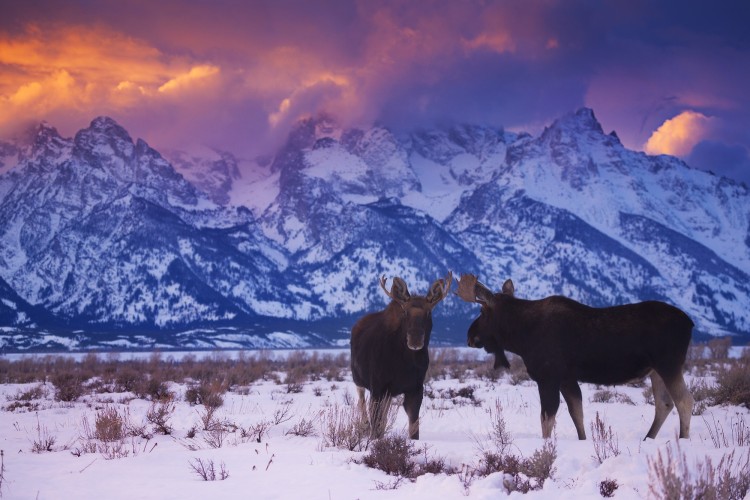
Grand Teton National Park offers the opportunity to see an abundance of wildlife during cold weather camping in the backcountry. Photo: Chase Dekker via Shutterstock
Overall
Snowshoeing is not only a great exercise but it can take you on scenic adventures you never thought possible. There’s nothing like the backcountry to experience the natural beauty of winter and there’s nothing more satisfying than camping under the great starry sky at night. Cold weather camping may seem daunting, but you might enjoy those winter nights even more than those summer ones with the proper preparations and the perfect destination!
To learn more about the destinations above and other national playgrounds, please visit the National Park Service or search for U.S.campsites at recreation.gov. At the NPS, you can find valuable information about specific rules and regulations including camping permits, weather conditions, road closures and parking, and trail maps for every park.
Read More: Tips and Tricks for Cold Weather Backpacking and Winter Camping


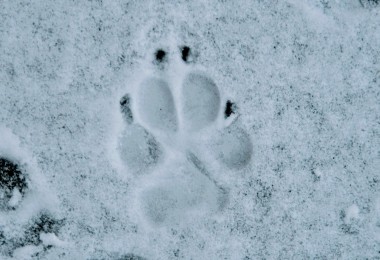
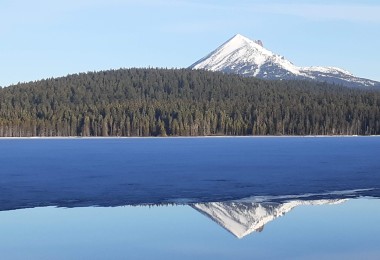
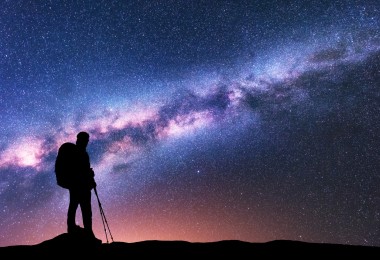
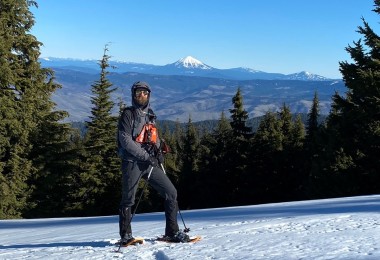

Leave a Comment